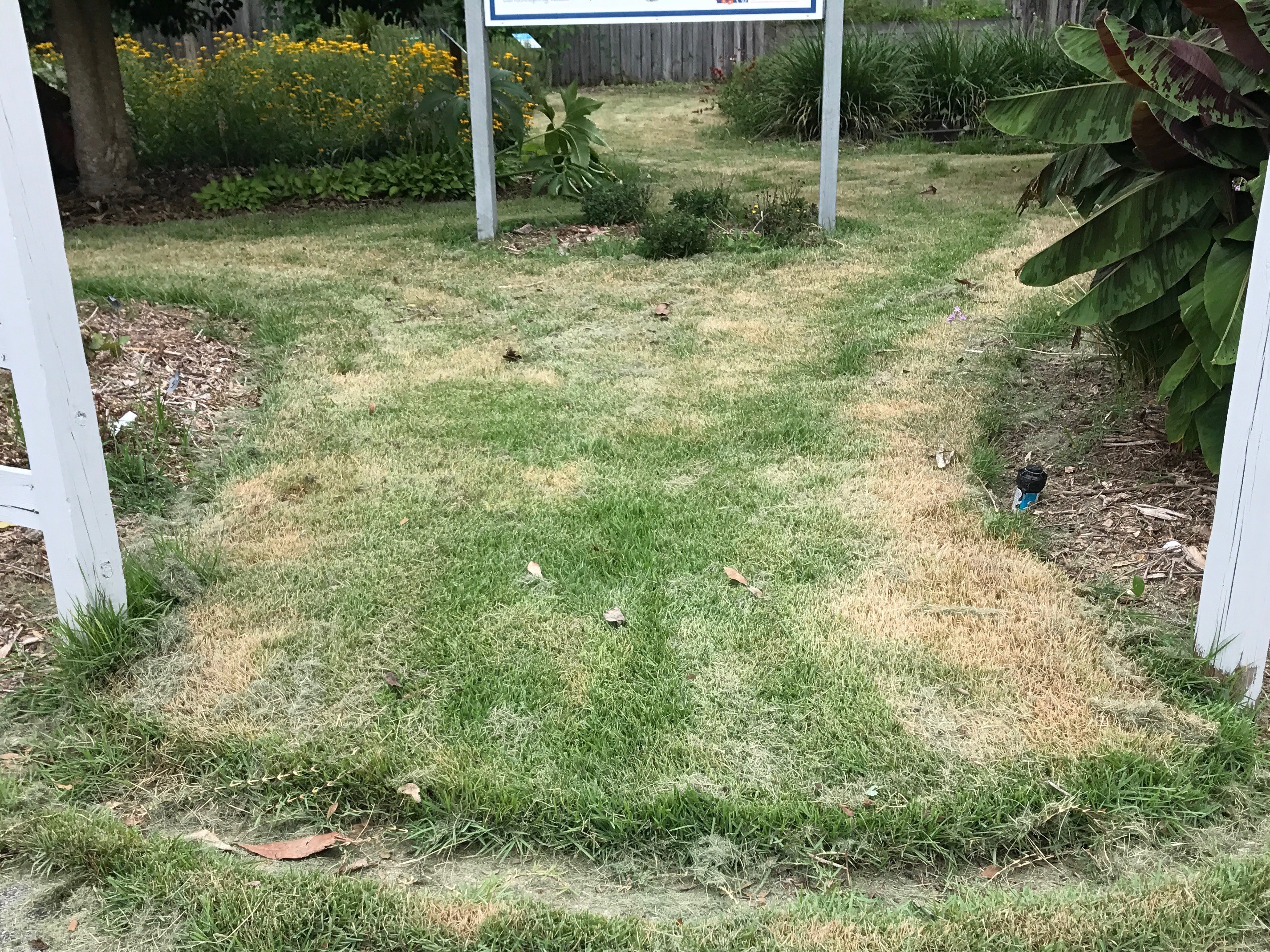
by Blake Thaxton | Jul 21, 2017
Northwest Florida has experienced an enormous amount of rain this summer. The western panhandle has received over 29 inches of rain since the beginning of May according to the Florida Automated Weather Network station at the West Florida Research and Education Center in Jay, Florida. That is 44% of average annual rainfall in less than two months. All of this rain has probably thrown off the normal lawn mowing routine. It is hard to get out and mow the lawn when its pouring buckets or the lawn resembles a swamp. With all of this in mind, there are a couple of mowing pointers that would be useful to implement to address the out of control lawn growth and the challenges posed by not being able to stick to normal mowing schedule.
- Always attempt to mow at the IFAS recommended height for your species of turfgrass. The recommended heights are determined by how quickly the species grow in our climate. The chart below shows the best heights at which to mow your lawn. The fine textured zoysiagrasses are not listed but should be mowed at 0.5 to 1.5 inches. Check the lawn mowers mowing height by measuring the distance from the ground to the bottom of the mowing deck on a flat surface.
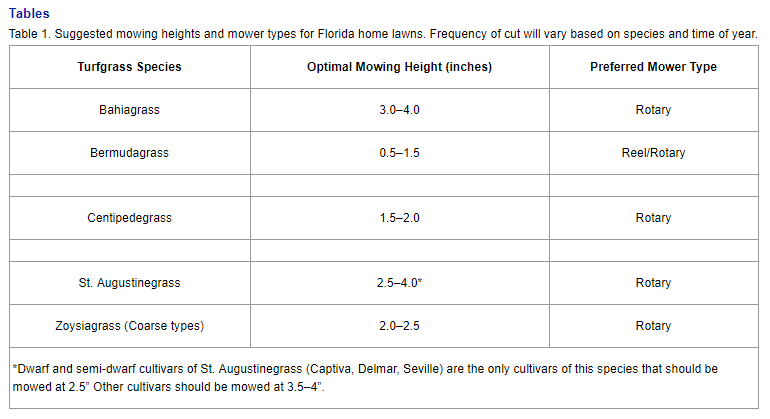
From Mowing Your Florida Lawn: http://edis.ifas.ufl.edu/pdffiles/LH/LH02800.pdf
- When you do get out to mow, never remove more than 1/3 of the leaf blade. If you cut to short you will “scalp” the turf and cause a brown look on the lawn. This can be damaging to the turf and allow for weeds to get established by exposing the soil to the sunlight. What is taking place more in northwest Florida is not mowing frequently enough and cutting off excess growth due to the rain. This also can cause scalping so it is very important to mow frequently enough to only remove 1/3 of the leaf blade.
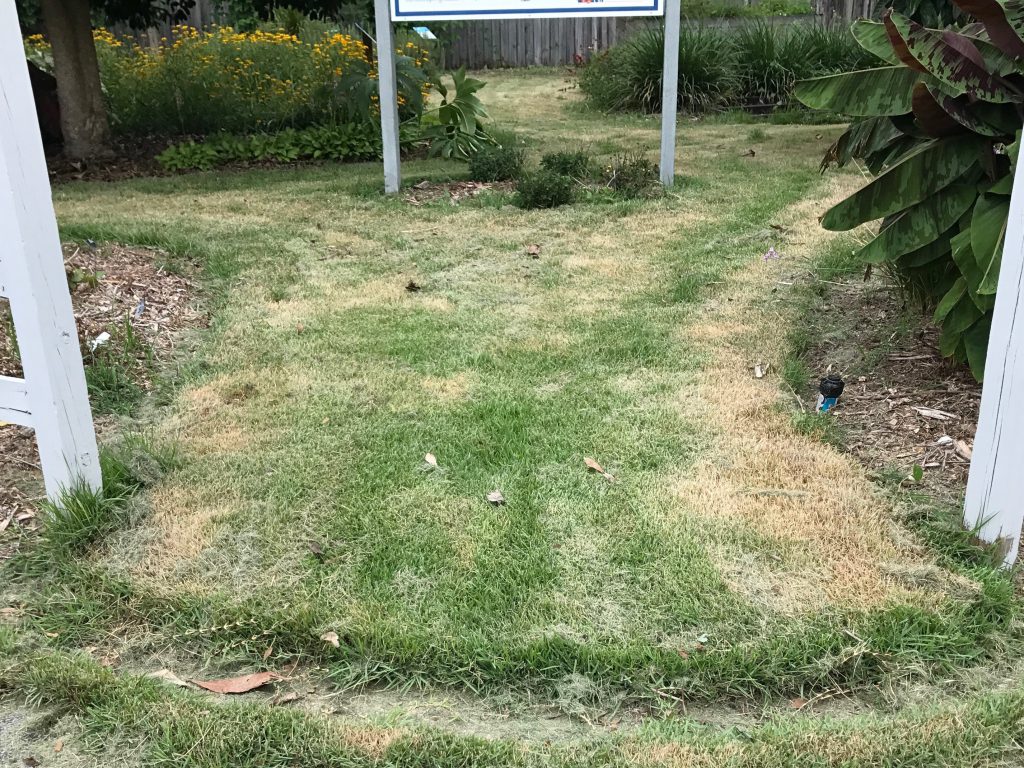
A zoysia lawn that has been “scalped” after excess growth and infrequent mowing. (Photo Credit: Blake Thaxton)
Other practices such as keeping your mower blade sharp, mowing in different directions, and leaving clippings on the ground will help keep a healthy Florida lawn. Please see more information about mowing correctly in Florida in the University of Florida/IFAS Extension publication: Mowing Your Florida Lawn
by Blake Thaxton | May 18, 2017
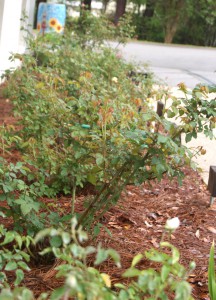
Properely pruned plants will produce vigroous new growth and ample new flowers. Even though these roses were pruned in February, soon it will be time to prune azaleas, right after they finish their bloom.
Pruning is something all homeowners and landscapers know is one of the many chores to be completed in the landscape. Everyone recognizes that pruning needs to be done on occasion, but it can be confusing to know how to prune the variety of species that can be in a landscape. There are some simplistic principles that can be followed while pruning.
Reasons for pruning:
- Training – to form good structure or good branching.
- Maintain plant vigor
- Control plant form and size
- Influence plant flowering and fruit
When to prune?
Several factors need to be considered when deciding the proper time to prune. If the plant species has a showy bloom to then consider the time of year it blooms. Some landscape plants flower on last years growths, therefore must be pruned following bloom time just before the flower buds are set for next year (ex. azaleas, spireas, and dogwoods). Plants grown with little regard to blooms, such as foliage plants like hollies, can be pruned from January to late Summer.
Learn More:
the following are great extension publications on pruning. read these to learnt he finer details of pruning so you can become an expert. Always remember to call your local extension office if you have any questions regarding pruning.
UF/IFAS – Pruning Landscape Shrubs and Trees
Alabama Cooperative Extension – Pruning Ornamental Plants
UF/IFAS Pruning website
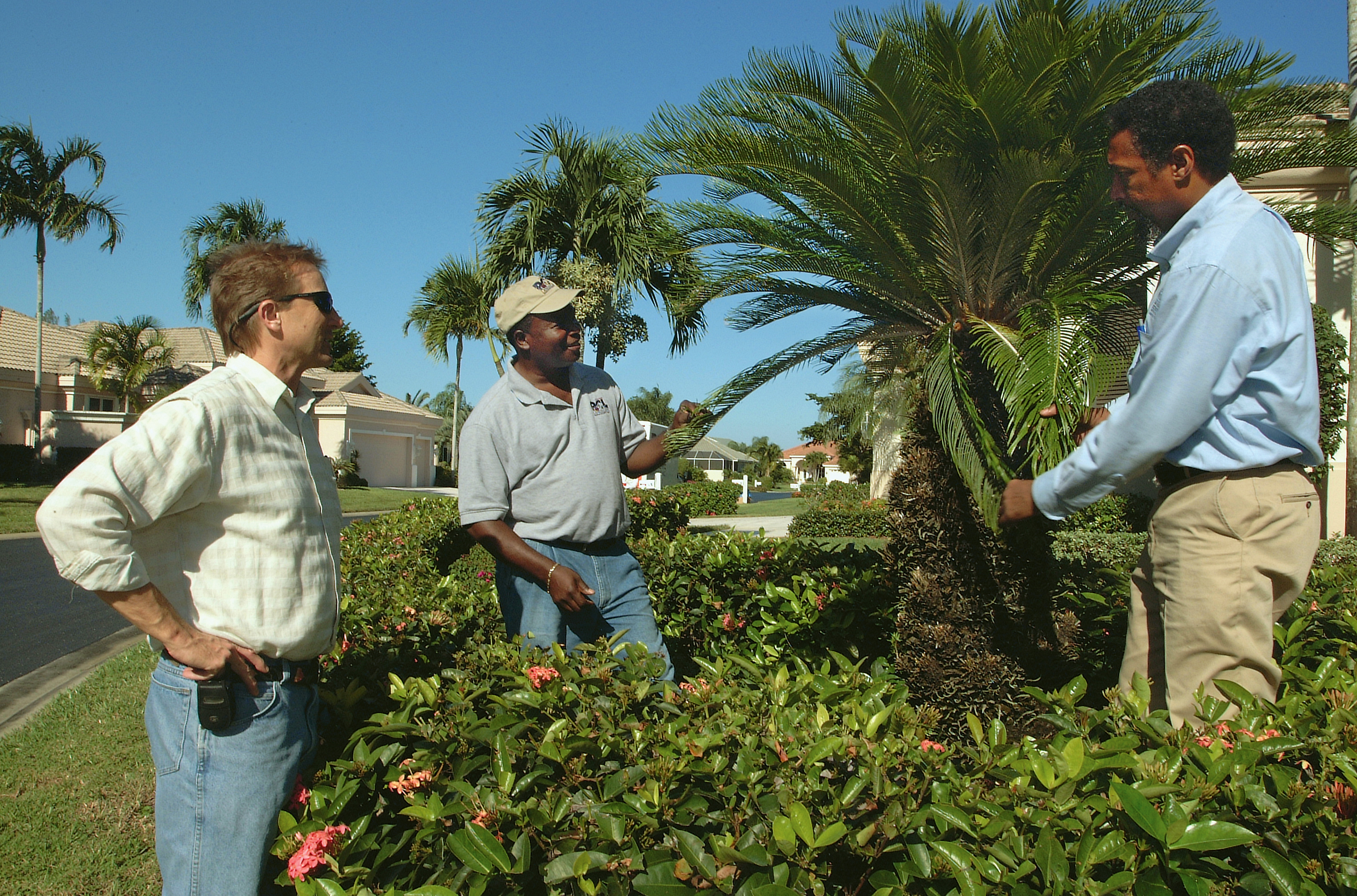
by Blake Thaxton | Mar 9, 2017
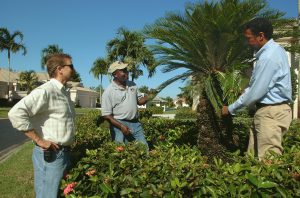
UF/IFAS File Photo
Lawns in northwest Florida are really starting to get going early this year. It is early March but feels much later in the year and many feel behind on their lawn maintenance and various other landscape chores. Maybe it is time to think about hiring a lawn maintenance company to do the job for you. Keep in mind a few tips while trying to decide which company you will hire.
- Lawn Maintenance and Landscape companies are NOT required to have a “professional license” in order to operate their business. This means anyone can start a lawn maintenance company whether they have experience or not. All it takes is a quick visit to the tax collectors office to get a tax receipt. This fact should make you want to go the extra mile to be sure you receive excellent service.
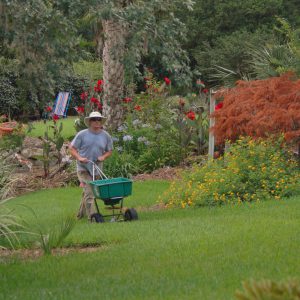
Photo Credits: UF/IFAS File Photo
- Make sure the company chosen has the proper amount of liability insurance.
- There are licenses required for specific services, such as applying fertilizers or pesticides. Check with the company to be sure that the pesticide or fertilizer applicator will be properly licensed to do the job required. Here is a list of licenses to be aware of while choosing a lawn service:
- Receive several quotes from different companies to compare pricing structures and rates. Ask for a very detailed quote. Communicate your needs accurately. Some companies will be better suited for a simple “mow and blow” job while others specialize in a full service job.
- Interview the company and be sure they follow University of Florida recommended mowing heights, fertilization rates, etc.* Quiz them on the subject to be sure they are familiar with properly maintaining landscapes.
There are a lot of really good Landscape and Lawn Maintenance professionals working in Northwest Florida. If you take some time while searching you will find a really good company who can help with beautifying your lawn and landscape.
*Call your local extension office to get the recommended mowing heights, fertilization rates, etc.
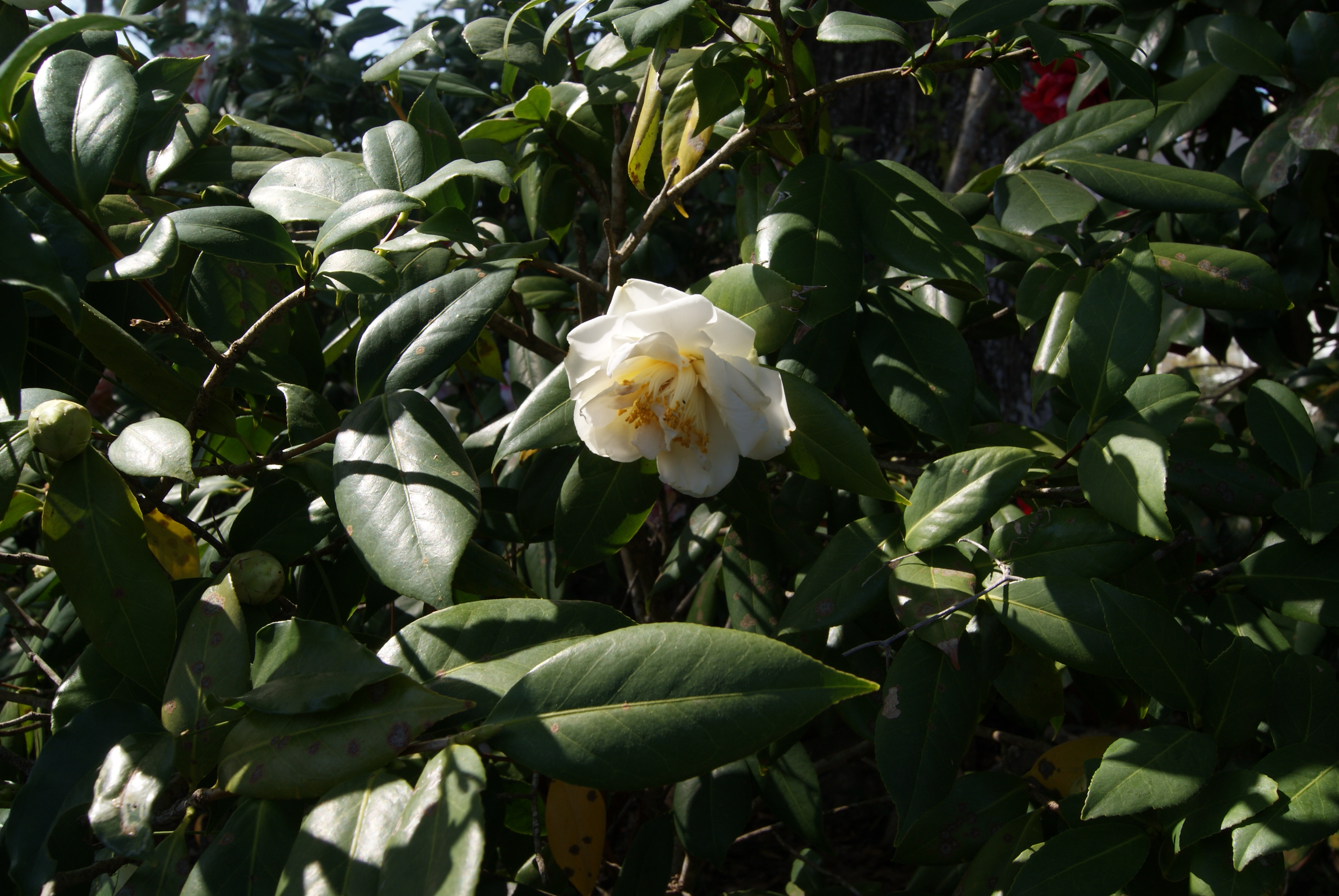
by Blake Thaxton | Nov 3, 2016
It was a hot summer that has continued into Fall. We hope cooler temperatures are on their way to the panhandle of Florida. Fall can be a great time to spruce up your landscape with some new shrubs.
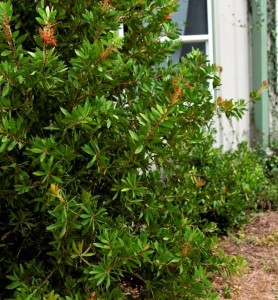
Image Credit UF / IFAS
It may be time for your landscape to receive a mini-makeover and to get a new look. Perhaps some strategically placed shrubs will be what makes an outdoor living space pop. Proper selection and installation is key to future health of new shrubs.
Selection
There are several factors that need to be considered before installing new shrubs to the landscape. Selecting plants carefully, based on the following points, will help with long-term success of the plant:
- Climate – Be sure that the species are climate appropriate.
- Environment – Study the light level, acidity, and drainage of the planting site.
- Space – Account for the mature size of the plant before planting. This will eliminate the possible need for plant removal if space is not adequate.
- Inspect the plant – Check for mechanical injury (scars and open wounds), cold injury, condition and shape of the canopy, and examine the root system.
Installation
Now that essential considerations have been made, it is time to give the shrub the best chance for survival with proper installation techniques. Fall and winter is an ideal time for planting shrubs. The roots can develop before the tops begin to grow in spring. The following are keys to proper establishment of container shrubs.
- Root ball preparation – Remove the container from the root ball and inspect for circling roots. If there are circling roots than make three or four cuts vertically to cut the roots. Pull some of the roots away so they will take on a new growth direction (massage the roots). Also find the top most roots, as sometimes they are covered by extra potting media. Remove the extra potting media so the top most roots are exposed and become the top of the root ball.
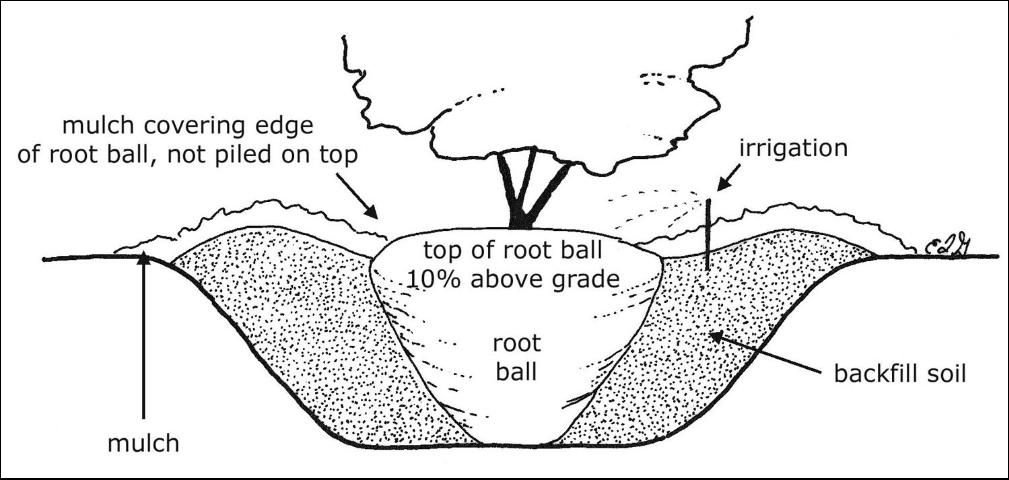
Image Credits: UF/IFAS, Edward F. Gilman
- Wider is better – Dig the hole two or three times the diameter of the root ball.
- Proper depth – Make sure to dig the hole 10% less than the height of the root ball. In poorly drained soils dig the hole 25% less than the height of the root ball. The top most roots should be slightly above the native soils.
- Backfill – Fill the hole with existing soil half way and tamp the soil to settle. Again fill the rest of the hole with the existing soil and tamp again to settle the soil. Do not place any backfill soil or mulch over the root ball as it is crucial that water and air are able to be in contact with the roots.
- Aftercare – Irrigate daily for the first two weeks, followed by every other day for the next two months, and weekly until the shrub is established (For <2 inch caliper shrubs).
If these key points are followed regarding selection and installation, the shrubs will be well on their way to becoming established in the landscape. If you would like read more in detail about installation please read the following:
Specifications for Planting Trees and Shrubs in the Southeastern U.S.
Literature:
Gilman, E.F., (2011, August) Specifications for Planting Trees and Shrubs in the Southeastern U.S.. Retrieved from: http://edis.ifas.ufl.edu/ep112
Black, R.J. and Ruppert, K.C., (1998) Your Florida Landscape, A complete guide to planting & maintenance. Gainesville, FL: University Press of Florida.
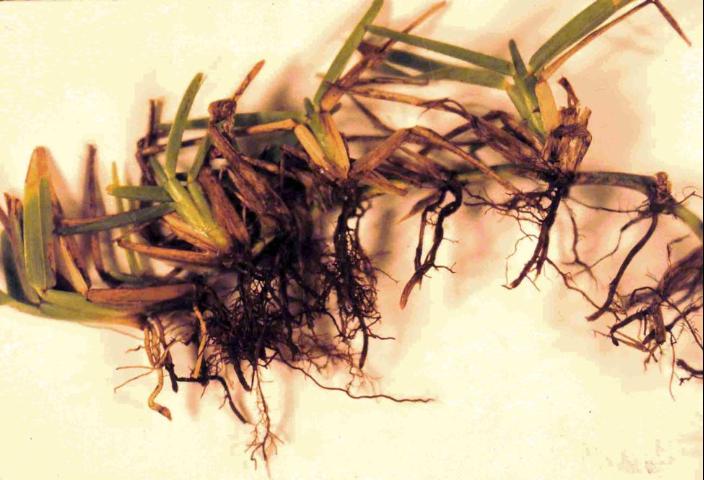
by Blake Thaxton | Sep 29, 2016

St. Augustinegrass roots rotted due to take-all root rot. (Photo Credit: IFAS Photos)
The crisp air of fall is upon us. Maybe. We live in northwest Florida and we are not experiencing the change in weather just yet. With the change in weather coming, we are having specific issues in turfgrass lawns and are sure to have others in the near future. Extension agents in the western panhandle have come into contact with several St. Augustine lawns with symptoms and signs of take-all root rot (Gaeumannomyces graminis var. graminis) and we can soon expect with cooler temperatures for Large Patch to be rearing its ugly head.

Early aboveground symptoms of take-all root rot. (Photo Credit: IFAS Photos)
Take-all root rot is sometimes referred to as a “stress disease”, as it is brought on by stressful weather conditions and improper management. Periods of rainfall can provide conditions for the disease to affect all warm season grasses. Other stresses such as improper mowing height, improper irrigation, and improper fertilization can worsen the situation. For example, St. Augustinegrass, except dwarf cultivars, should be mowed at 3.5 to 4 inches and the mower should never remove more than 1/3 of the leaf blade at any cutting. With the current high temperatures and prolonged periods of rainfall it can be difficult to follow this practice. When a homeowner does not mow the lawn in a timely manner and lets the lawn grass get much too high and cuts more than 1/3 of the grass blade, this can become a stress to the lawn. Fungicide sprays can be made during favorable environmental conditions, before symptoms are seen to protect from infection with take-all root rot for high valued properties. To learn more about take-all root rot refer to this University of Florida/IFAS Extension publication: Take-all Root Rot
With the fall weather coming, please be sure to read and learn about large patch disease as well. This can brought on by temperatures of less than 80 degrees and high humidity or extended periods of rainfall. Read the University of Florida/IFAS Extension publication for more information: Large Patch
For any other information needed regarding proper lawn management, please visit Your Florida Lawn or contact your local UF/IFAS Extension office.











